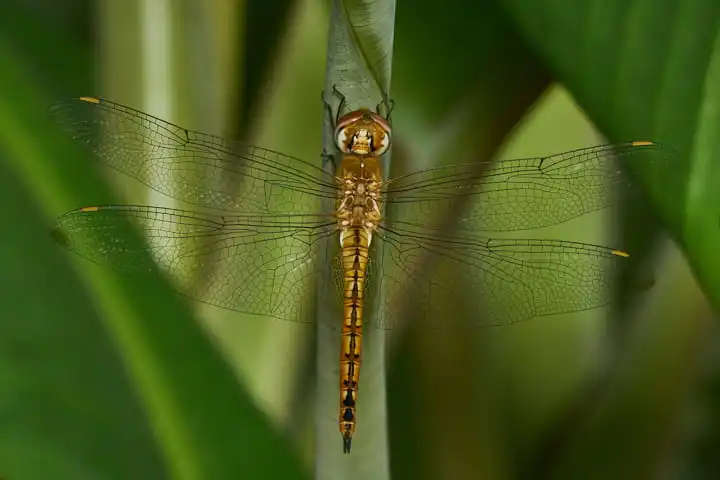Though small in size, dragonflies intrigued scientists as they wondered if they could possibly fly thousands of miles across the Indian Ocean, travelling from India to Maldives to Africa and come back again by the same route?
Marine biologist Charles Anderson in 2009 put forward this hypothesis — when he observed the globe skimmer dragonflies also known as Pantala flavescens in Maldives – that they had come from India. When they took off again, they were heading to East Africa.
After a passage of more than a decade a group of international researchers led by Sweden’s Lund University decided to check out Anderson’s claims according to an article in sciencedaily.com. Using simulations and models they tried to find out if the hypothesis was possibly correct.
Also read: Leprosy, mankind’s age-old scourge affects chimpanzees too, reveals an international study
Since these insects are very small, it is not possible to fit them with transmitters, so the scientists inspected their physiological aspects. They further calculated how long can these dragonflies stay in the air by utilising the stored energy in their body.
To assist them in their study, they also used meteorological wind models to find out if there were winds that would help these creatures in migrating in both directions.
Giving a gist of the research, Lund University’s biology researcher Johanna Hedlund said: "Our study shows that this migration from India to East Africa is actually possible. However, the globe skimmer dragonfly can't manage it using only the fat it can store in its body. It also requires favourable winds and these are present during certain periods of the year.”
The simulated migration experiments used wind models. This suggested that dragonflies up to 15 per cent in spring could migrate from India to Africa while in autumn, 40 per cent of them could do the same journey but in the opposite direction.
The results impressed Hedlund and her colleagues. More than that, what was indeed spectacular was that this migration across the Indian ocean was the animal kingdom’s longest when one took into account the size of the creature.
Speaking on this aspect Hedlund said: "We have got a lot closer to solving the mystery of how a tiny dragonfly, which only weighs 300 milligrams, can cross 2,000 kilometres of open sea.”
Also read: Siberian dogs reveal secret of ancient trade links between snowy Arctic and the Caspian Sea
It is not just dragonflies that depend on wind conditions that are favourable for their migration. There are examples of Jacobin cuckoo and amur falcon, both of which move across the Indian Ocean. As per the scientists of this study change in climate could affect this long distance travel by these two birds and the dragonflies. The reason being there is a possibility of change in the wind pattern when the water surface becomes warm.
This study is vital for more than one reason. While it gives us insight into how long distances this animal kingdom’s creature could traverse, it also helps in increasing our knowledge about spread of diseases by migratory animals and how they also contribute to the ecosystem services at locations spread wide across the globe.




















